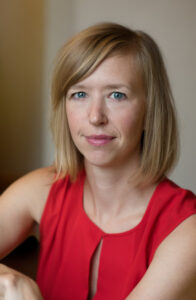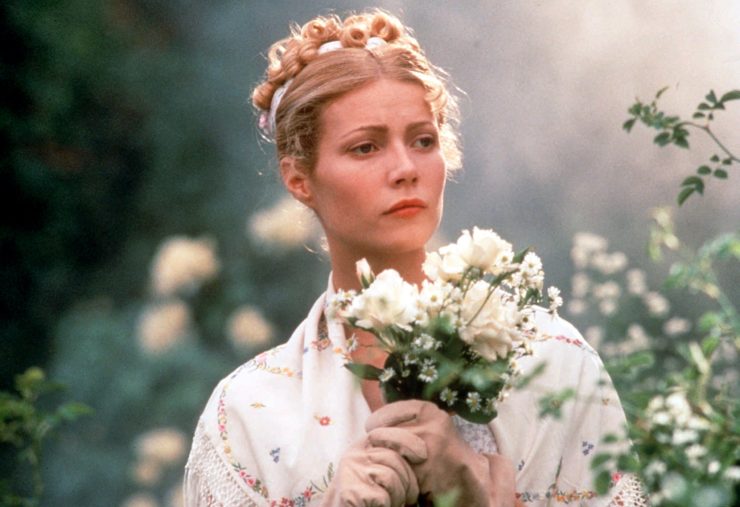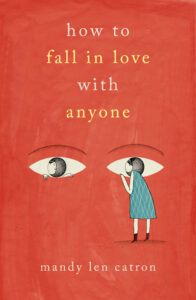Perhaps you’ve read that Modern Love essay in The New York Times, the one that zipped around the country along internet tethers and social media synapses in 2015 like contagious hope, bearing an irresistible headline – “To Fall in Love With Anyone, Do This” – and instructions on how to actively navigate into love instead of passively stumbling and falling into it.
Mandy Len Catron’s first-date experiment in what you might call “intentional romance” struck a nerve. One of the most popular stories on The Times site that year, its viral reach betrayed a pervasive hunger for answers about love, a driving force that has had more odes written about it than directions. Drawing on a decades-old psychological project, Catron translated lab lessons into what felt like an instruction manual.
"I think the thing about the essay that is so beautiful is that it can contain almost anything. You can put research in there, you can put personal narrative in there."
That piece launched Catron’s newest endeavor, “How to Fall in Love With Anyone,” a collection of essays that ask questions about love, yes, but also about what we talk about when we talk about it, and how.
Catron moves gracefully into her role as love story expert, sharing narratives as diverse as her grandmother’s coal country marriage to a man twice her age and the “Pretty Woman” Cinderella story. (She investigates the origins of Cinderella herself, too.)
Catron shares research and revelations that upend her own assumptions and guide readers through theirs. In the spaces and surprises she uncovers, there’s a tiny seed of something like hope — not for the magic and serendipity we’ve seen on TV, but for that wild unknown to become a little more knowable.
Catron and I spoke by Skype about genre-bending, finding meaning in facts, and the danger of fetishizing love. The conversation has been slightly edited for length and flow.
Your book has a lot of research in it as well as a lot of personal storytelling; it almost reads as several genres smashed together, which I love. How did you think about genre as you were planning and then writing this book?
I think of myself as an essayist above anything else, and I think about the book as a collection of essays. For a long time, I felt like I was not allowed to write a collection of essays. I thought you had to already be super well-established to do that. I thought, Nora Ephron can do this, and Joan Didion can do this, and Barbara Kingsolver can do this, because they're all also something else. But I didn't think that I could do it because I wasn't anything else. I was just a writer and a teacher.
But the essay is really having a moment right now. I think people are into it. I was really excited when I got permission, basically. When I found my agent, I was like, I have this weird manuscript, and it's got a lot of memoir in it, it's got a lot of research in it, I don't know how to structure it, and he was like, do you want to write a collection of essays? I immediately knew how to organize it; suddenly everything just clicked into place.
I think the thing about the essay that is so beautiful is that it can contain almost anything. You can put research in there, you can put personal narrative in there. The essay about my parents begins with what is essentially fiction, which is me imagining how they met, which turns out to be not how they met at all — but you can even put that in there as long as you acknowledge that it isn't true. I love that about the genre. It has boundaries, but the boundaries are basically that it has to be true and that everything in it has to be working toward some central question. Beyond that, the content is really flexible, which I love.
Was there something about the memoir(ish) genre that was specific to this process of almost exorcising your obsession with love stories, something that might change in future work?
I don't know if I know the answer to that. I do think I will keep writing essays. I like taking a big abstract idea and thinking it through. Ultimately, abstractions become interesting only when you ground them in real experiences.
Those experiences don't necessarily have to be mine. I did a lot of interviews for the book, and I think I'll continue to do that. But I'm much more comfortable saying, “This is what I've learned from this process, or this is what I understand now that I didn't understand in the past” — than saying, “This is what you should know, or this is what you should understand or you should believe.” I don't like people telling me what to think, and I don't want to do that to other people.
"One of the things I found throughout the book was this desire to pin love stories down and dissect them and understand how they work and sort of take away some of their power — and yet at the same time I have this persistent desire to be moved by them."
Phillip Lopate has described the plot of the essay as the writer grappling with some sort of problem, and I really like that idea. I like reading essays because I like watching other people grapple with ideas.
Your New York Times essay doesn't end with a traditional storybook ending; You might be falling in love, but you're not sure. It's very ambiguous, not like the end of a movie when everything is happily ever after. But in your book, even though there is still all this ambiguity, it does take on the structure of this “happily ever after” love by the end. How much did you think about that while you were working on it?
I struggled with that, because I didn't want the book to have a happy ending. But ultimately, I'm working with the raw material of my own life. And I am really happy in my relationship right now. It's so great, and it's something that I never thought was possible. And I'm very wary of fetishizing love. I've just written this whole book trying to unpack it. I don't want to come across as being like, "And now I've got it all figured out."
Because I don't feel like I've got it all figured out. I feel like I have a lot of knowledge, and I'm good at doing research. I feel like I can say to someone — as I do in my column at The Rumpus — here's some information that you might find useful. But ultimately, I think of myself as someone who is more interested in deconstructing our ideas about love than telling people how to practice love. But you can't do one without doing a little bit of the other.
The book ends where it does, and the fact is that I can't separate all the research and thinking I've done about love from the nature of my relationship.

How do you approach the challenge of translating all that research to a wider audience?
I often feel that this is my mandate as a teacher. I think it is so important, and I think it's hard to do well. I happen to be in a very privileged position of being at a university and having a lot of friends who are scientists, who have been a good source of information both in finding resources and in helping me understand things that I don't necessarily have the background knowledge to make sense of. I often tell my science students — I teach first-year science and engineering students how to write research papers — that this is the skill that will separate them from the thousands of other straight-A students they’re going to graduate with.
The biggest thing is being able to contextualize research, and it's something I think I'm getting better at, but I don't necessarily feel like I've perfected it yet. It's easy to seize on a study and take a piece of data and say it’s really interesting and meaningful, but if you don't have a sense of the larger body of that research, it can be very deceptive. What I try to do is sit with some information for a long time before I make sense of it, if I can, and see how other people are writing about it in context. Let it simmer and see what else is being said about that topic.
You mention in your book that “Pretty Woman” and a few other key love stories have affected you. Are there any love stories that you think totally nail it?
One of the things I found throughout the book was this desire to pin love stories down and dissect them and understand how they work and sort of take away some of their power — and yet at the same time I have this persistent desire to be moved by them. Those two things are inevitably at odds with each other, and I wanted that to be OK. I wanted there to be space for that in the book.
Increasingly, what I'm interested in are stories that treat love with more nuance and don't necessarily fetishize romantic love but treat it as this powerful human experience that isn't necessarily separate from all the other ways we experience love in our lives. The thing I've enjoyed recently that does this really well is “Master of None” on Netflix. I think part of the reason [Aziz Ansari] is so good at making this is that he has done all the research about romantic love. He and Eric Klinenberg did all this research for “Modern Romance,” and all that research actually shows up in his TV show, which I think is amazing.
With some exceptions, it seems like love is traditionally thought of as the domain of women. How much did you think about those gender divisions while crafting this book?
I thought about that a lot, and I don't think about it quite as much anymore. There's a lot of interesting research about how love sort of became in the domain of women. There's this great book by Susan Ostrov Weisser called “The Glass Slipper.” It's a very feminist reading of how our current romantic culture started in the Victorian era and continues today. She looks at Austen and she looks at the Brontës, and she wrote this one amazing chapter, an analysis of Victorian-era magazines and contemporary magazines. The Victorian era is when we first started associating love with marriage and thinking about romantic love as a sort of virtue and a reward for goodness, and what she found is that in both the Victorian era and the present day, popular culture magazines were essentially interested in giving people advice about how to find love.
What's happened since is that increasingly, that advice is split. Advice about how to find love is increasingly directed toward women, and advice about how to find sex is increasingly directed toward men. You can look at any two gendered magazines on the newsstand and see this separation. So I think we have this idea that women are more inherently interested in love than men, but she shows that this hasn't always been the case, that it's something that is happening in our culture and what's causing it isn't quite clear. The magazines are obviously reflecting this cultural divide; they're not necessarily creating it, but there's probably an extent to which they're reinforcing it. So I'd like to see the day when that changes a little bit.




